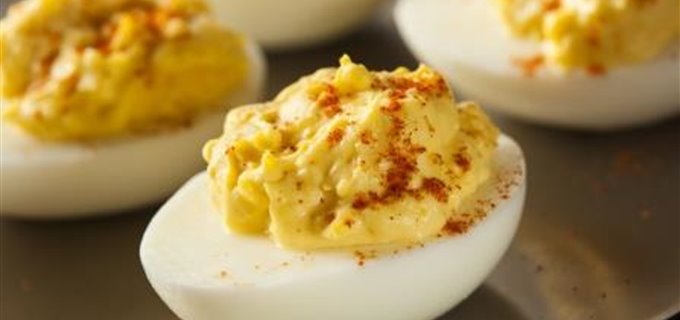Search for a doctor or hospital in your network.


Search for a doctor or hospital in your network.

Get News & Updates Directly To Your Inbox
If you’re eager to roll out the picnic blankets, fire up the fire pit or lay out a tasty poolside spread, follow these simple food prep and safety tips. They’ll help protect you and your guests from becoming ill due to contaminated food.
If you freeze and thaw deviled eggs before your party, the safest way to thaw them is in the fridge. Don’t run the risk of allowing salmonella to tag along for the ride by setting them on the counter. Remember, if you’re not sure if a dish has been out too long, it’s best to toss it and start from scratch.
If you want to be sure your outdoor menu won’t give bacteria a place to lurk, avoid using milk or milk-based products. A dairy-free spread is safer. Here are some common offenders to avoid outdoors:
What do your Grandma’s famous potato salad, your sister’s irresistible deviled eggs and your kid’s favorite tuna salad sandwich have in common? They all contain mayonnaise. Mayo is a fan-favorite dairy product made up of egg yolks, lemon juice, vinegar, mustard and salt. Still, it’s the dairy in these babies that puts them in the “perishable” category. These kinds of foods need to be refrigerated or frozen within two hours of prep or purchase. Once outside temps hit 90 degrees Fahrenheit, they must be refrigerated or frozen within one hour of prep. And sorry, but no, a bowl of ice doesn’t cut it.
These steps can help to prevent illness from bacteria, but if you experience food poisoning and need to see a doctor, remember where you go matters! Do your research about ERs versus urgent care centers now so you know where to go in case of emergency.
"May-yo" have a good summer!
 U.S. Department of Agriculture, 2021; Can Mayonnaise Increase the Risk of Food Poisoning?,
U.S. Department of Agriculture, 2021; Can Mayonnaise Increase the Risk of Food Poisoning?,  The New York Times, 2008; Food Poisoning,
The New York Times, 2008; Food Poisoning,  Mayo Clinic, 2022
Mayo Clinic, 2022Originally published 6/10/2016; Revised 2021, 2023
Blue Cross and Blue Shield of Illinois, a Division of Health Care Service Corporation,
a Mutual Legal Reserve Company, an Independent Licensee of the Blue Cross and Blue Shield Association
© Copyright 2025 Health Care Service Corporation. All Rights Reserved.
Verint is an operating division of Verint Americas, Inc., an independent company that provides and hosts an online community platform for blogging and access to social media for Blue Cross and Blue Shield of Illinois.
![]() File is in portable document format (PDF). To view this file, you may need to install a PDF reader program. Most PDF readers are a free download. One option is Adobe® Reader® which has a built-in screen reader. Other Adobe accessibility tools and information can be downloaded at https://www.adobe.com/trust/accessibility.html.
File is in portable document format (PDF). To view this file, you may need to install a PDF reader program. Most PDF readers are a free download. One option is Adobe® Reader® which has a built-in screen reader. Other Adobe accessibility tools and information can be downloaded at https://www.adobe.com/trust/accessibility.html. ![]()
![]() You are leaving this website/app ("site"). This new site may be offered by a vendor or an independent third party. The site may also contain non-Medicare related information. Some sites may require you to agree to their terms of use and privacy policy.
You are leaving this website/app ("site"). This new site may be offered by a vendor or an independent third party. The site may also contain non-Medicare related information. Some sites may require you to agree to their terms of use and privacy policy.
Powered by Verint